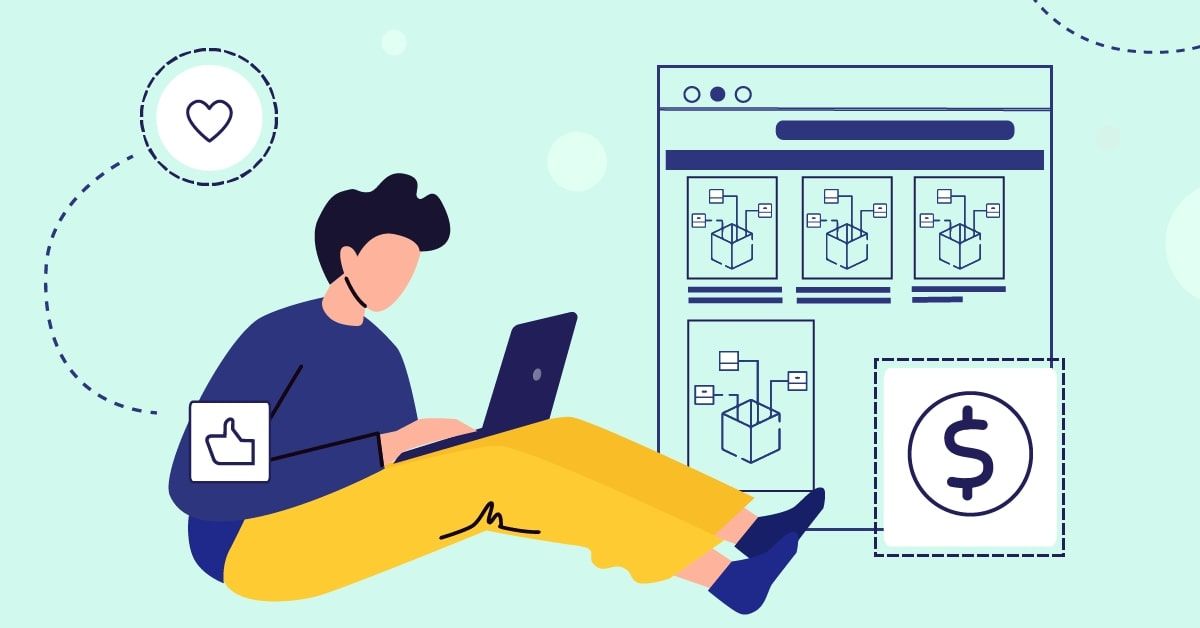Imagine this visual for a moment. It’s a beautiful sunny day, and you’re a gardener watering flowers on your property. You pick up your watering bucket and take it to the outdoor faucet to fill up with water. You notice a leak in the bucket, and half of the water is gone by the time you get to the first flower bed. You can keep going like this, but it will take twice as long and waste a lot of water. What should you do?
A SaaS company with a poor user adoption strategy is like having a leaky bucket. Sure, you can compensate by constantly refilling your bucket with water, but the most effective way is to fix the leaks to stop wasting water.
This article will show you how to create an effective user adoption strategy in 10 steps so you can stop leaking customers.
Looking for easy-to-use SaaS adoption software?
Stonly helps make digital adoption hassle-free for your SaaS product customers.
Start a Free Trial.
What is a user adoption strategy in SaaS?
User adoption in SaaS is the process of transitioning new users into habitual power users of your product. A user adoption strategy is an intentional framework for making key decisions about how you will get more new users to fully adopt your product.
While the particulars of any user adoption strategy may differ significantly from company to company, most effective methods include some combination of these three elements:
- Improve the product—increasing the overall value to users will increase adoption.
- Improve onboarding—helping users discover the value quickly will increase adoption.
- Improve support—helping users overcome roadblocks quickly will increase adoption.
Why do SaaS companies need a user adoption strategy?
User adoption is critical to the health and success of SaaS companies because it secures users to be long-term customers. The SaaS business model relies on recurring revenue from retained users, so if adoption fails, the whole model fails.
User adoption doesn’t just happen. To optimize an adoption engine, you must start with an effective strategy for how you will use your resources and make decisions to remove friction in the adoption process.
Customer Retention is ALWAYS less expensive than acquisition.
It costs Saas companies five times more to acquire a new customer than retain an existing one. The irony of this cost mismatch is that 80% of a company’s future profits come from 20% of existing customers. According to a recent study by Bain & Company, increasing retention by as little as 5% could result in a 95% increase in profits.
Companies often undervalue new user onboarding in terms of its ability to engage new users and set them on the clear path to adoption. New users are 100% engaged when they enter your product. Emphasizing onboarding in your adoption strategy will leverage this engagement and channel them toward becoming repeat, power users.
Winning new customers too often overshadows keeping existing ones.
If you look at the organizational structure of most companies, you will find that there is an unequal emphasis on new customer acquisition. The entire marketing and sales teams are devoted to quickly churning up interest and converting leads into new customers.
With so much noise and excitement around winning new customers, you may lose focus on crucial retention activities. These include new user onboarding, fantastic customer support (great self-service knowledge base examples), and continual product improvements. Having an intentional adoption strategy will help you stay balanced in your effort toward acquisition and retention.
Increasing customer lifetime value is key for SaaS companies.
Three of the most important metrics for SaaS companies are:
- Customer lifetime value (LTV)—the average monthly revenue per customer multiplied by the average customer lifespan
- Customer acquisition cost (CAC)—the total expenses to acquire customers divided by the number of customers acquired
- The LTV/CAC ratio—the lifetime value divided by the customer acquisition cost
A higher LTV/CAC ratio indicates that your model justifies high customer acquisition costs because you have proven the ability to retain customers long enough to earn multiples higher in terms of revenue. A strong user adoption strategy is one of the best, most cost-effective ways to increase LTV.
How to create a SaaS user adoption strategy?
Next, let’s dig into the steps to create a strong user adoption strategy.
If you are an early startup without a lot of historical data, or the historical data isn’t as helpful because of your high growth, you will need to do the best with your data. Your focus should be on learning quickly and being ready to iterate as you learn.
If you are an established company that has more data to pull from, you should be prepared to leverage your historical data to make informed decisions throughout the process.
1. Understand your company's mission, vision, and strategy.
Your company's best user adoption strategy will be rooted in your company’s mission, vision, and overall strategy. Understanding these foundational principles of your company is the equivalent of starting with the “why,” which will make your user adoption strategy more meaningful and sustainable.
For example, Pluralsight is an online technical training company with a mission to democratize professional technology learning. With learning being so core to its mission, part of its user adoption strategy is to include frequent free assessments so that users can regularly see the progress they are making.
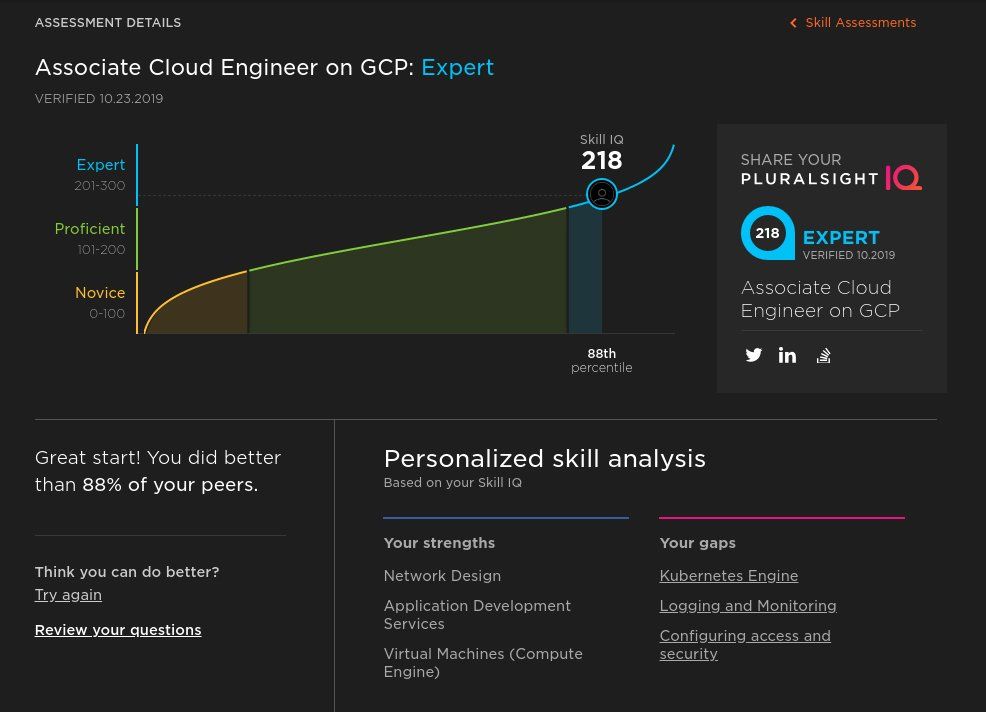
2. Be clear with your product vision.
Your adoption strategy must be resilient enough to adjust as your product matures. Building a strategy that relies too much on today’s capabilities without considering tomorrow’s innovations will limit its success.
Your product vision should outline the direction of your product over the next few years. While you won’t know exactly which features you’ll release, you can know the future problems that your product will tackle. For example, part of your strategy can be intentionally updating onboarding and product marketing to users as you improve your product.
3. Know your customer segments.
Even for the most simple products, there will be groups of customers who use the product differently. Your adoption strategy will be more effective if it allows each distinct group of customers to achieve their version of success and value in your product.
To discover your customer segments, you will need to collect and analyze data from multiple sources such as:
- Website lead forms asking about job title, industry, and company size
- New user onboarding fields asking about job title, industry, company size, and use case
- Product analytics and behavioral data cross-referenced with information you have about the different types of customers
- Discovery interviews with customers, learning about their use case and behavior
- Submitted support requests and in-app feedback submissions
- If you have a customer service knowledge base, you can also analyze customer behavior there
Group your customers into a few high-level buckets based on what you learned. How you group them may be different for each company, but will likely align with their industry, use case for the product, and size.
4. Understand your Customer Value Journey by segment.
Your customer value journey describes all the steps your customers take from the point that they experience the pain that your product solves, become aware of your product, decide to try it out, adopt it, and ideally evangelize your product. Your adoption strategy is taking customers from one point when they start to use your product and progressing them to the point where they become product evangelists.
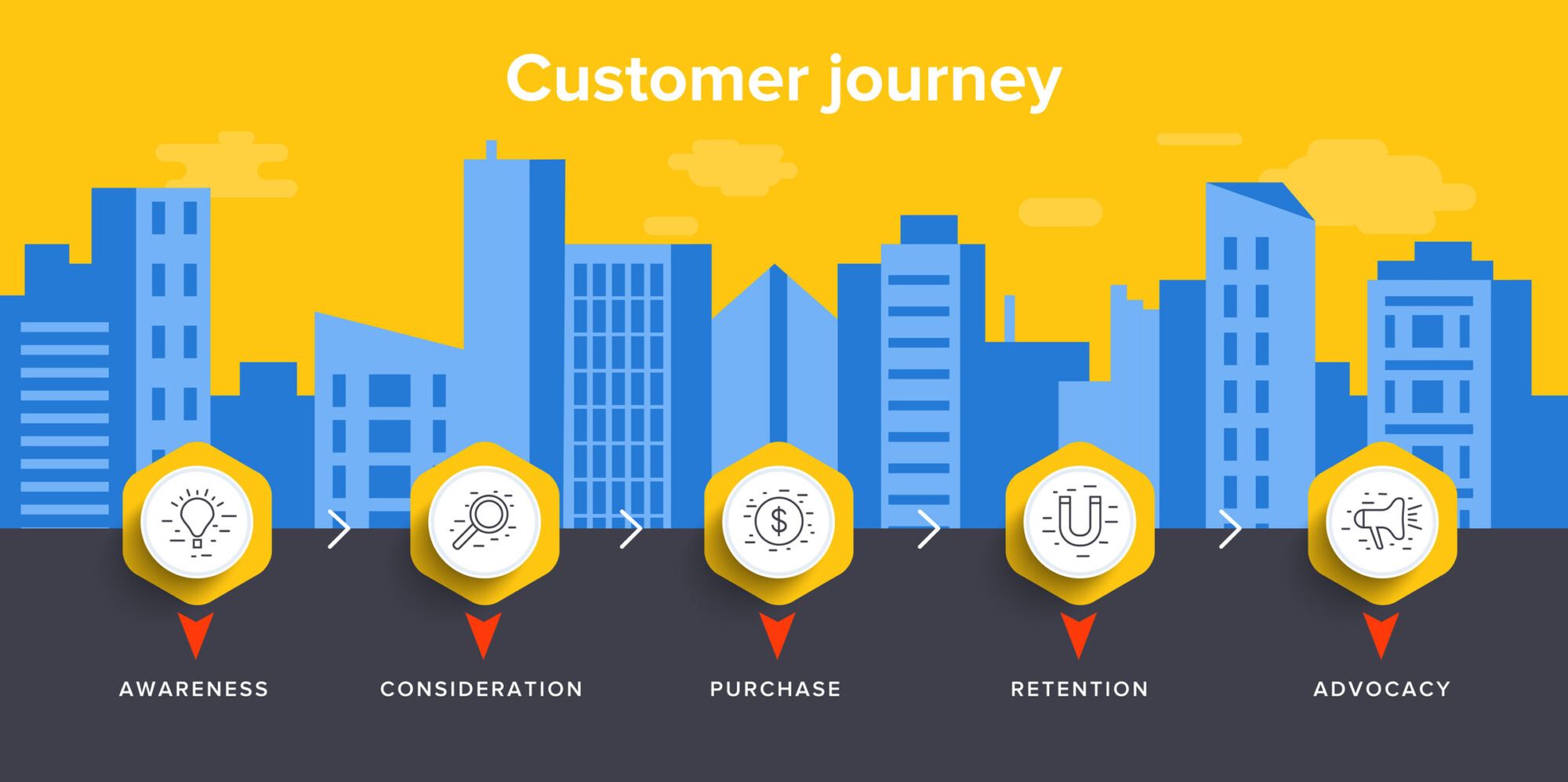
Being able to visually represent this journey is powerful. It will help you identify what strategy elements you may already have in place. If you already have working elements, you should incorporate these into your adoption strategy instead of working separately or even against them.
Related post: Product Adoption Curve: Improving SaaS Adoption at Each Stage
5. Define “activation” when customers experience initial value.
Activation refers to the moment when newly acquired users take action within your product that indicates they are using your product to get value. There is often a short half-life of interest and engagement with new customers, so getting to activation quickly is essential.
Based on a lot of the data you collected during step 3, you can look at users who ended up adopting your product and identify their behavior as new users. The behaviors that separate new users that adopted from those that didn’t point to the metrics you should be tracking for activation.
Often, this won’t be just one action. You may find that key behaviors need to happen on day one first, and if that is a good experience, they are more likely to take the additional actions in subsequent days that set them on the path toward adoption.
For example, Uber defines day one activation when a new user downloads the app and books their first ride. However, other necessary actions that indicate a path toward adoption include setting and saving a payment method on file, which may happen days later.
Looking for a better way to engage and activate new users quickly?
Stonly helps make new-user onboarding intuitive for all user segments. Start a Free Trial.
6. Define “adoption” that differentiates power users from casual users.
Adoption is the moment when a user decides to implement your product into their process and routine. When mapping your customer’s journey, consider that users evaluate your product before, during, and even after purchase. Adoption is when the user considers their evaluation complete, with your product passing the test.
Defining this moment is difficult. You can again leverage the data you collected during step 3 to try and find the behaviors and characteristics that indicate that the evaluation period has ended.
For example, for many B2B SaaS companies, setting up an integration is a key measure of adoption because it shows that the customer is confident enough in the product to take the time and effort to integrate it into its workflow and processes.
7. Build an onboarding plan to achieve activation and drive toward adoption.
Your onboarding will be significantly more effective in driving toward adoption if it incorporates the learning and elements from the previous steps.
Because you’ve done the work to dive into your data and define your key metrics, you can build an interactive onboarding experience that can feel tailored to each user across all of your important customer segments.
Not all onboarding tools allow you to infuse your process with this level of interactivity. Stonly is the best option to build out multiple onboarding paths and let users interactively choose the right path. You can make its interactive guides available through in-app prompts and tooltips and connect them to an onboarding checklist to give users more guidance.
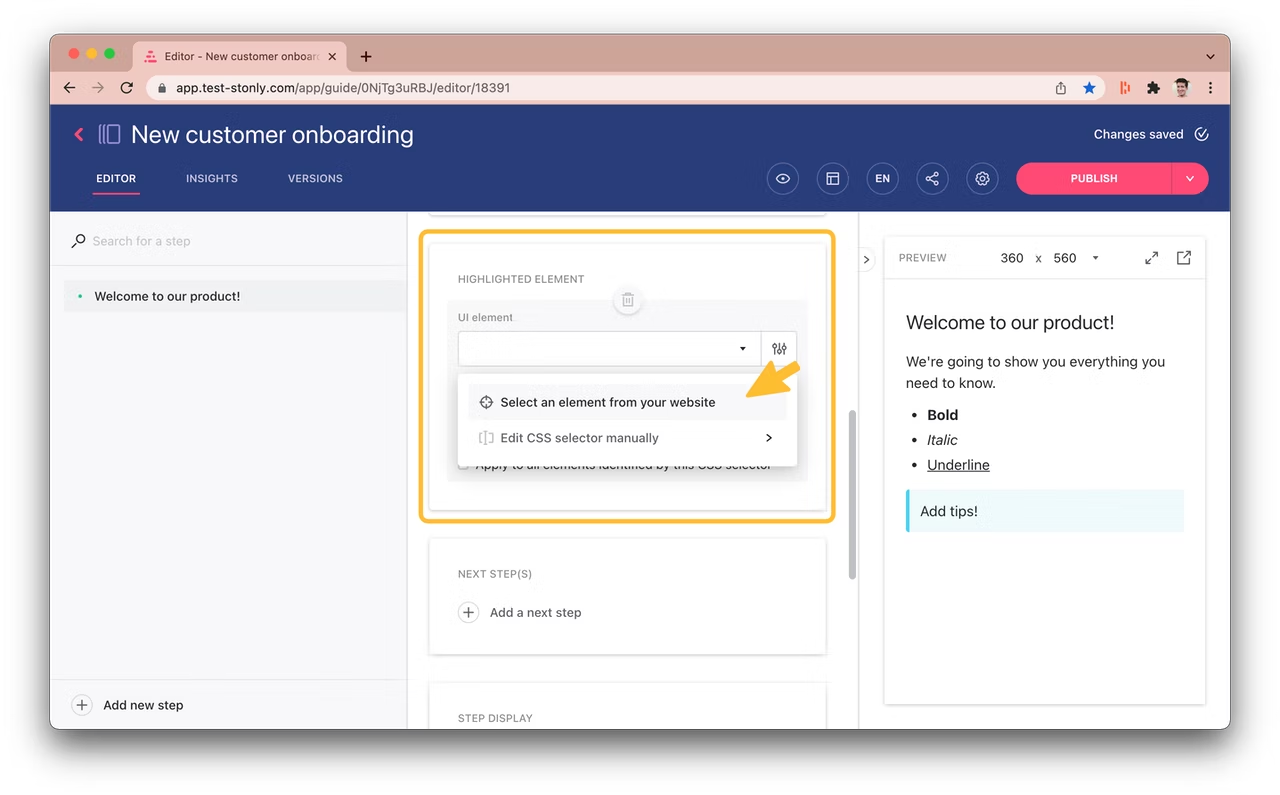
Stonly’s no-code implementation makes it easy to include any of your in-app elements into your product tour. You can guide users to the features and parts of your product shown through your data analysis are more likely to result in activation and ultimately adoption.
For a deeper dive into improving your onboarding, check out these onboarding examples and this guide to enterprise SaaS onboarding.
8. Incentivize teams to drive toward adoption.
Don’t miss this often overlooked step when building your user adoption strategy. Most compensation and incentive structures focus more on customer acquisition than adoption or retention. This is partly because it’s much easier to measure customer acquisition than adoption.
How to incentivize adoption will be different for each company but is an important part of your adoption strategy. Here are a few ideas for incentivizing adoption:
- Include adoption and retention into the commission structure for customer success
- Offer bonuses or gift cards for reaching adoption and retention milestones
- Include adoption metrics alongside acquisition metrics in meetings and presentations
- Highlight customer stories in company communications, showing their adoption story
9. Implement a plan for continual customer discovery.
In step 2, we emphasized the importance of understanding your product vision before you jump into creating the tactics behind your user adoption strategy. In this step, you should build in habitual practices to ensure that your adoption strategy is flexible and can adjust to your product vision.
Build mechanisms to continually receive customer feedback through in-app feedback widgets or surveys and recruit customers for periodic discovery and feedback interviews.
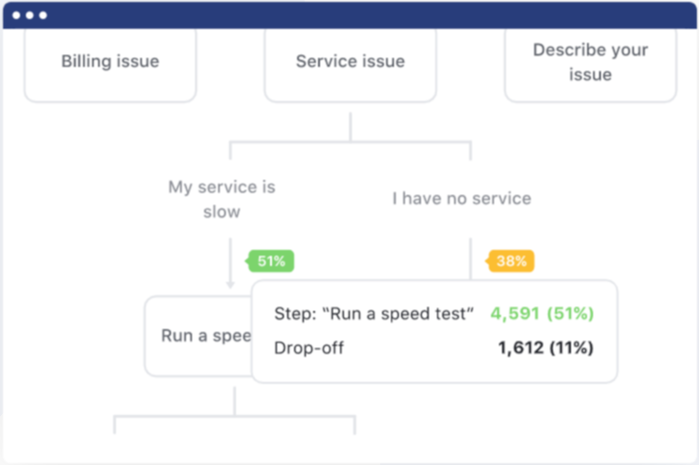
Monitor the success of your onboarding paths using the tools and analytics provided by your onboarding software. Using Stonly, you can easily monitor how well your in-app onboarding experience results in successful customer activation. You can also see the step-by-step paths customers take to get there. By analyzing these data, you can find areas of friction or drop-off to know which areas to improve.
10. Push adopters to become advocates.
Your user adoption strategy is the starting point for turning your power users into advocates for your product. When users have adopted your product, they have evaluated it (often against your competitors) and chosen to implement it.
You can leverage your users’ satisfaction with your product by incentivizing them to share it with others. Having power users as advocates is a great way to gain trust with leads and potential users. You can ask them for permission to use their logo in your marketing materials, ask for their participation in a case study, or incentivize them to share referrals or post on social media.
Conclusion
Use these steps to create a new user adoption strategy or improve a leaky strategy to retain more users and watch your profits soar.
The focus on onboarding and improved support will improve your user adoption strategy.
Stonly is an essential ingredient in your user adoption strategy. It has multiple features to help you implement effective product onboarding, leading to more users activating on their way to fully adopting your product. Stonly is unique in that it also provides excellent self-service support tools through its interactive knowledge base platform.
Looking for easy-to-use SaaS adoption software?
Stonly helps make digital adoption hassle-free for your SaaS product customers.
Start a Free Trial.

